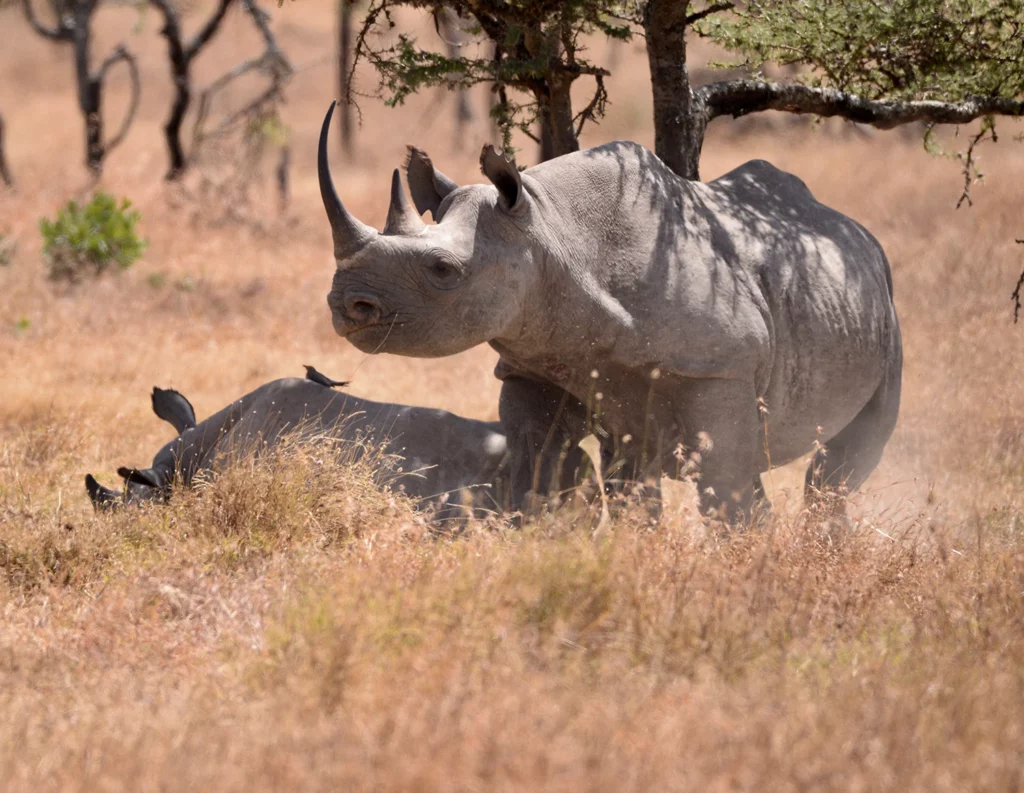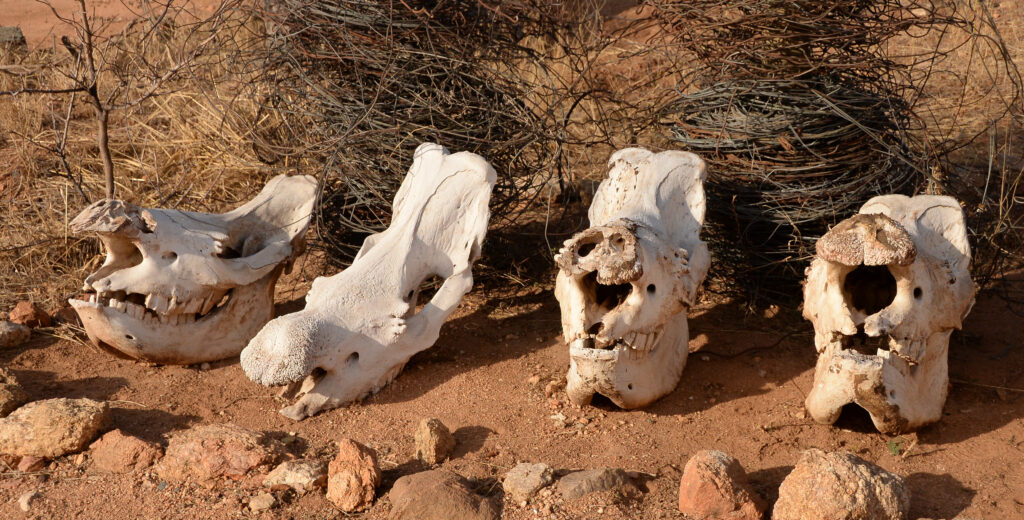A report looking at rhino population trends across the globe in 2024 has found that while poaching has decreased since 2021, other threats such as drought and habitat loss are now taking a toll on rhino numbers. The report entitled “African and Asian Rhinoceroses – Status, Conservation and Trade” was commissioned by the Convention on International Trade in Endangered Species of Wild Fauna and Flora (Cites) Secretariat, and compiled by the International Union for Conservation of Nature (IUCN) Species Survival Commission’s African Rhino Specialist Group, Asian Rhino Specialist Group and TRAFFIC.
It is encouraging to read some positive trends in the most recent IUCN Species Survival Report, most notably the increase of 5.2% in black rhino population and the reported lesser involvement in the illegal rhino horn trade of China. However, a decrease of 6.7% in the continental rhino population and an even more concerning loss of 11.2% of the white rhino population, alongside the emergence of Malaysia as a large player in the destination of rhino horn, is a stark reminder that we still have much work to do before the rhino is safe from the very real threat of extinction. The rhino crisis is more than just a poaching problem, with lack of connected habitat an ever-growing cause of concern. Engaging communities who live close to rhino habitat remains essential to any long-term success, but the loss of our rhino remains a global problem that needs global solutions.
Population Highlights
The number of African rhinos decreased by 6.7% in 2024 compared to 2023 to
around 22,540
Black rhino population – 6788, an increase of 5.2% versus 2023
White rhino population – 15,752, an alarming decrease of 11.2% versus 2023
Greater One Horned rhino population – 4075, compared to 2565 in 2007
Javan rhino population – 50 versus a reported population of 76 in 2023 (although the
accuracy of the 76 is disputed)
Sumatran rhino population – 34-47

While the report states the poaching rate for African species dropped to 2.15%, the lowest since 2011, poaching surges across a number of range states (range states are countries where rhino naturally occur) in early 2025 have acted as a stark reminder of how quickly these gains can be lost.
The continued and steady increase in the greater one horned rhino is encouraging news for the Asian species, and conservation efforts across India and Nepal are to be commended. However, the situation remains precarious for the Javan and Sumatran rhino, with the Javan species still reeling from the loss of around a third of its total population between 2019 and 2023, due to the actions of one poaching gang.
Black Rhino
We are greatly encouraged by the rise in numbers of the critically endangered black rhino and celebrate the report’s statement that ongoing conservation efforts are preventing even greater species decline. However, the species is still facing a “high extinction risk” and as such we know our efforts cannot be slowed. We are proud to have supported a number of key black rhino translocations across Kenya and South Africa in 2024, which have seen rhinos moved from areas with high population densities, to regions with low or no rhinos, to establish founder populations. As well as expanding black rhino ranges across Africa and bolstering genetic diversity, these translocations have seen births in the new populations, and expected birthrate increases in the donor populations attributed to the decreased population density.
White Rhino
The stated 11.2% decrease in white rhinos is of great concern, and has predominantly been attributed to ongoing poaching in South Africa. With 420 rhinos killed by poachers in South Africa alone in 2024 the impacts of poaching on the long term survival of the rhino cannot be overlooked. Through a combination of boots on the ground, aerial anti-poaching support, cutting-edge technology and effective community involvement we have lost just three rhinos to poachers across our areas of operation in the past six years. We will continue to work with our partners across Africa, and especially within South Africa to continue this trend and expand our influence to protect more key populations. We know that the white rhino has seen population increases in recent years and we are confident that this downward trend can once more be reversed.
Illegal Wildlife Trade
Despite a decreasing poaching rate and less horn entering supply chains, the demand for rhino horn from predominantly Asian countries is still driving huge losses.
The issue of illegal trade looms over any conservation progress, however size and weight of seized shipments of horn has decreased since it’s peak in 2019. As home to the largest population of the world’s rhinos South Africa is unsurprisingly the country hit hardest by the illegal trade, with Malaysia and Vietnam being the strongest links for the illicit trade. Strengthened law enforcement and anti-corruption efforts focused on these three countries would therefore have the biggest effect on dismantling the organised criminal syndicates running the trade the report suggests. But with discrepancies around stockpile numbers, seizures and horns destroyed, calculating the true number of horns entering the trade is incredibly complex. Combined with in-consistent political will and rampant corruption, it is evident that a global response is needed to disrupt the organised criminal gangs that are behind the illicit trade.

Habitat Fragmentation
A key finding from the report is that many rhino populations across Africa still exist in small, fragmented populations which are not genetically viable. While this is concerning it is not surprising. Correcting this is a core driver behind our Rhino Strongholds initiative, where together with our Leadership teams across South Africa and Kenya we are working to link key habitats and create connected landscapes where rhinos can exhibit more natural behaviours, including migration to find new mates and strengthen genetic diversity. Alongside this we know that expanded habitats are more resilient to climate related threats such as drought and extreme flooding, which has been identified as another reason for low population growth.
As ever it is a mixed bag for rhino – with both promising and concerning population trends. It is vital that we take encouragement from the good news and celebrate what we are doing well as an international community, but we must also learn from what is not working and acknowledge the gaps in the global response to this issue. We are still far from reaching a point of stability for rhinos, but thanks to ongoing research like this the path towards that point is becoming ever clearer.
How You Can Help
We are steadfast in our commitment to create and expand Rhino Strongholds – secure habitats where rhinos and the species they share them with can thrive, whilst creating long term socio-economic benefits for the people who live alongside these wild spaces. We know that these interventions work, but we can only continue to fund them with your support – please donate today.